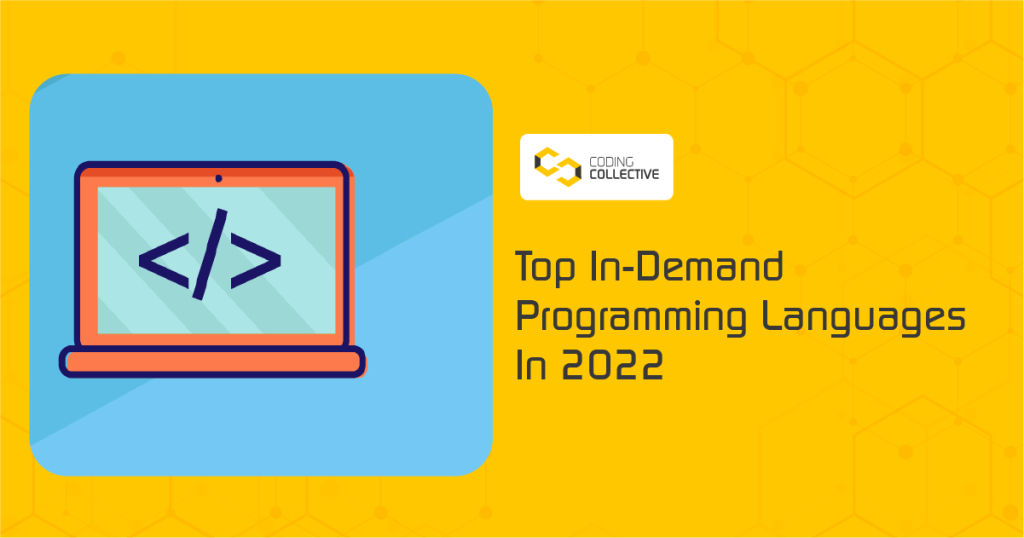
A. Python
Python can be regarded as the future of programming languages. As the latest studies show, Python is the preferred coding language for almost 80% of developers. The extensive libraries are available in Python aides in programming for artificial intelligence, data science, and machine learning processes. Currently, Python is trending in 2022 and can be considered as one of the leading programming languages. Learning and being knowledgeable in this programming language in 2022 will definitely aid a developer. It is one of the most lucrative languages that offers amazing features like:
• Easy to learn and code.
• Extensive libraries and frameworks that support a plethora of applications.
• Incorporated the variants of Java and C like CPython, Jython, etc.
• GUI support.
• Companies working on Python: Intel, Facebook, Spotify, Netflix, etc.
Python allows designers to make capacities with fewer lines of code, which is not possible with most other programming languages. It is a comparatively simple language to learn and with practice, it gets easier. In fact, you can build a simple game in a couple of days!! The cross-stage. Python system works for multiple devices and systems like Android, Windows 7, Linux, and Mac. It is an ideal modem for composing both straightforward content and complex multi-strung applications. The fascinating thing about Android having Python in it is the opportunity to utilize limitless lines of code previously composed and accessible with ease. Development in Python applications has been the quickest among data researchers, especially those working in AI, and Stack Overflow.
The benefits of python are as follows:
• GUI based desktop applications
• Graphic design, image processing applications, Games, and Scientific/ computational
applications
• Web frameworks and applications
• Enterprise and Business applications
• Operating Systems
• Education
• Database Access
• Language Development
• Prototyping
• Software Development
A compiler converts the source programs from human-readable language to machine-readable language. Online compilers allow users to compile source code and execute it online in different programming languages. If you can’t install Python on your computer for some reason but need to execute Python code, then you can use an online Python compiler to run Python code online in your browser. The most popular online compilers in 2022 are Replit, Ideone, OneCompiler, JDoodle. From industries like finance, healthcare, and insurance, retail banking, to fields like aerospace to entertainment — Python-based tech is driving innovation and new solutions.
B. Javascript
JavaScript is a text-based programming language used both on the client-side and server-side that allows you to make web pages interactive. JavaScript is one of the world’s most popular programming languages on the web. As per the survey, more than 97 percent of the websites use
JavaScript on the client-side of the webpage. JavaScript is mainly used for web-based applications and web browsers. But JavaScript is also used beyond the Web in software, servers, and embedded hardware controls.
Some features of Javascript are:
• Object-Centered Script Language.
• Client edge Technology.
• Validation of User’s Input.
• Else and If Statement.
• Interpreter Centered.
• Ability to perform In Built Function.
• Case Sensitive format.
• Light Weight and delicate.
JavaScript is one of the first client-side scripting languages and it is still the most widely used. Many developers have made improvements to the language over the years. They have created extensive JavaScript libraries – more concise languages constructed from the building blocks of JavaScript that are less complex and can be targeted for specific applications. JavaScript has become integral to the Internet experience as developers build increased interaction and complexity into their applications. Search engines, e-commerce, content management systems, responsive design, social media, and phone apps – all use Javascript.
Benefits of Javascript:
• It has a well-organized codebase that provides enhanced productivity and readability.
• Easy to learn and is highly in demand.
• Platform independence and greater control of the browser.
• Provide user input validation features.
• The top companies using JavaScript are Microsoft, Uber, PayPal, Google, Walmart, etc.
Over the years, Javascript has become popular in a wide spectrum of industries like finance, insurance banking, advertising and marketing, market research, business support, logistics, and entertainment
the industry as well.

C. SQL
Structured Query Language – or SQL – is a simple query-based language that is easy to read and write. It’s one of the most universal languages in the world. It is a standard database language that is used to create, maintain and retrieve relational databases. Since its conception, SQL has become a very important tool in a data scientist’s toolbox since it is critical in accessing, updating, inserting, manipulating, and modifying data. It helps in communicating with relational databases to be able to understand the dataset and use it appropriately.
Features of SQL are:
- SQL is easy to learn.
- SQL is used to access data from relational database management systems.
- SQL can execute queries against the database.
- SQL is used to describe the data.
- SQL is used to define the data in the database and manipulate it when needed.
- SQL is used to create and drop the database and table.
- SQL is used to create a view, stored procedure, function in a database.
Companies such as Oracle, Microsoft, Sybase, and Ingres use SQL to power their databases SQL Server Management Studio is a workstation component or client tool that will be installed if we select the workstation component in the installation steps. This allows you to connect to and manage your SQL Server from a graphical interface instead of having to use the command line. In order to connect to a remote instance of an SQL Server, you will need this or similar software. It is used by Administrators, Developers, Testers, etc.
SQL Server Management Studio can be used to perform several database tasks like:
- Quickly create or modify SQL database(s)
- Add database objects including tables, views, and stored procedures
- Modify database objects including tables, views, and stored procedures
- Test database objects using external testing tools
- Deploy databases to their respective onsite, remote, or cloud-based server environments
- Query database(s) to get results
- Optimize database(s) to improve response time
- Manage databases such as backup, restore, and maintenance plans
- Import or export data
- Generate database or their objects scripts
- Backup databases
- Restore databases
There is also a number of SQL server administration tasks that can be conveniently done by using SQL Server Management Studio (SSMS):
- Connecting and registering onsite or remote servers
- Managing users and logins for both server(s) and databases
- Monitoring server activities through logs
- Monitoring database performance
- Monitoring SQL Server instance performance
- Replicating data (a methodology to ensure databases remain in sync with one another)
- Dropping and detaching databases and file groups
- Scripting tools to write and run scripts to perform administrative tasks
- Automating database management activities
- Automating database maintenance plans
- Registering servers for managed administration
SQL is a powerful, yet simple, query-based language that helps you handle databases with ease. It comes with great community support, and is open-source, making it an inexpensive choice no matter what your budget is. Over the years, SQL has found its way into several industries like banking and payments, the music industry, the retail industry, and social media platforms. Managing huge amounts of data into readable databases and retrieving the same with ease makes SQL a fit language for developers to use in these industries.
D. C++
C++ is a general-purpose programming language that is widely used for competitive programming. It has imperative, object-oriented, and generic programming features. C++ runs on multiple platforms like Windows, Linux, Unix, Mac, etc. It is one of the oldest and most effective languages. However, as the language doesn’t use the objects, it’s difficult to make the programs that have inheritance data. It doesn’t support class methods that are faithful away, but class methods are basic functions. C++ program uses multi-paradigm programming. It follows three paradigms. Generic, Imperative, Object-Oriented. C++ program is ideal for low-level programming language and really efficient for general purposes. It offers performance and memory efficiency along with high-level abstraction. C++ may be a system programming and features a relatively clear and mature standard.
The key features of C++ are:
• Object-Oriented Programming.
• Provides data abstraction, data encapsulation, data hiding, inheritance, polymorphism.
• It is machine-independent.
• Simple language
• Intermediate Level Programming Language.
• Compiler-based
• Dynamic memory allocation.
• Integration and Extendability.
Well-known tech companies and organizations using C++ include Evernote, LinkedIn, Microsoft, Opera, NASA, and Facebook. Evernote switched from NET to C++ for more speed and better graphics. C++ is a very popular language for performance-critical applications that rely on speed and efficient memory management. It’s used in a wide range of industries including software and game development, VR, robotics, and scientific computing.

E. Go
Go is a really simple language to understand. It allows new programmers to pick up the language quickly and allows experienced programmers to understand someone else’s code very easily. The language is fast. The tooling provided by it is amazing: a great testing framework built into the
language itself, that can also generate code coverage reports; a great linter, and lots of other compelling tools to perform static analysis. And Go’s built-in source formatting tool is a game-changer. Gois a procedural programming language. Programs are assembled by using packages, for
efficient management of dependencies. This language also supports environment adopting patterns alike to dynamic languages. There are various online IDEs such as The Go Playground, repl.it, etc. which can be used to run Go programs without installing. Because Go language is an effort to combine the ease of programming of an interpreted, dynamically typed language with the efficiency and safety of a statically typed, compiled language. It also aims to be modern, with support for networked and multicore computing.
Some features of Go are:
• Flexible- It is concise, simple, and easy to read.
• Concurrency- It allows multiple processes to run simultaneously and effectively.
• Quick Outcome- Its compilation time is very fast.
• Library- It provides a rich standard library.
• Garbage collection- It is a key feature of go. Go excels in giving a lot of control over memory allocation and has dramatically reduced latency in the most recent versions of the garbage collector.
• It validates for the interface and type embedding.
Go language is just like Java and it supports platform independence. Due to its modular design and modularity, the code is compiled and is converted into binary form which is as small as possible. Its code can be compiled in any platform or any server and application you are comfortable with. Go provides the unit testing features. It is a simple mechanism to write your unit test parallel with your code. This enables you to understand your code coverage through your own tests. And that can be easily used in generating your code documentation as an example. Go merges modern-day developer workflow of working with Open Source projects and includes that in the way it manages external packages. Support is provided directly in the tooling to get external packages and publish your own packages in a set of easy commands. Go has a powerful standard library, which is distributed as packages. Go is a really flexible language, able to solve a lot of problems. You can use it for system and network programming, big data, machine learning, audio, and video editing, and more. Top companies using Go are Google, Uber, Twitch, Dailymotion, SendGrid, Dropbox.
